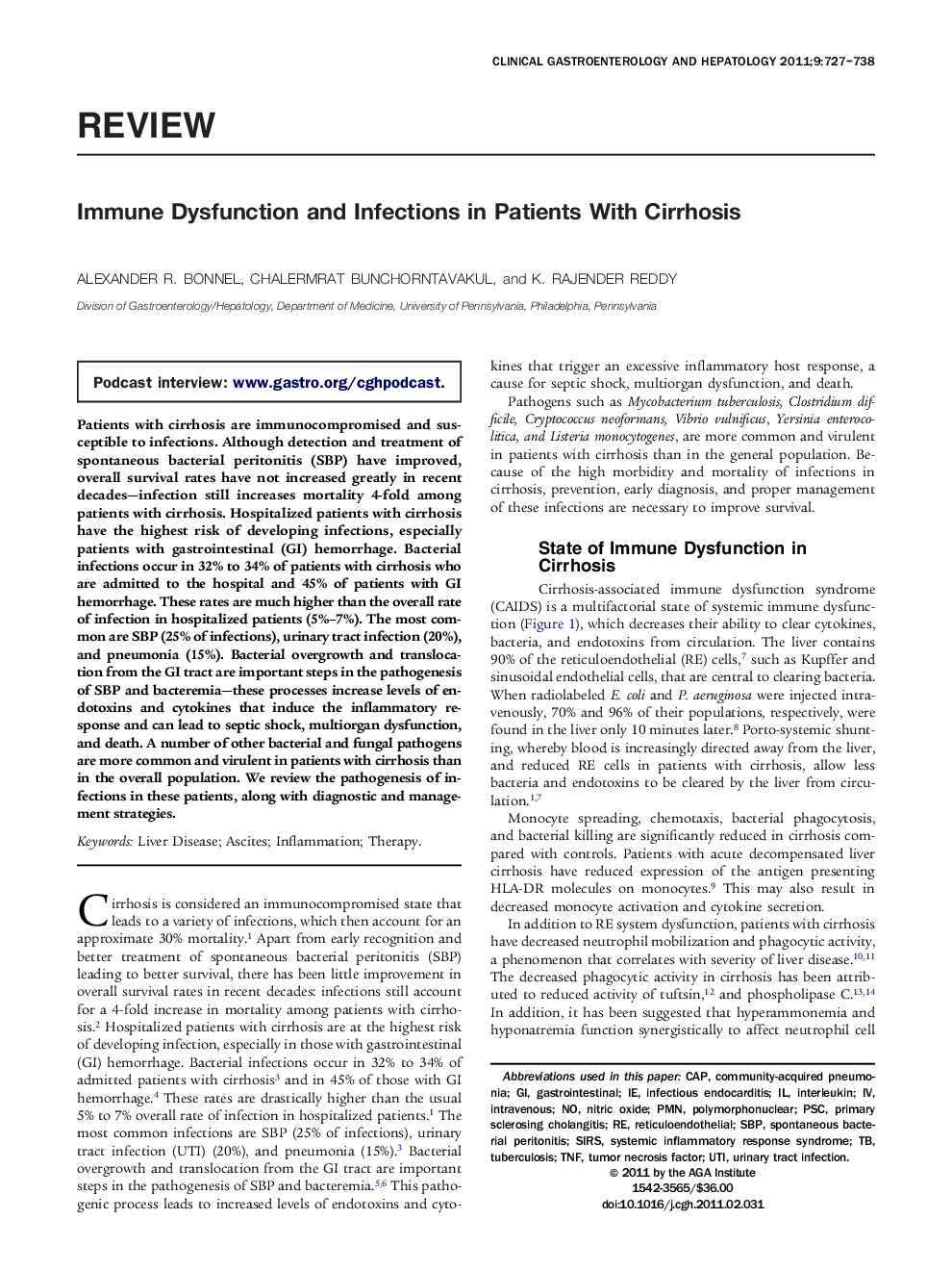| Article ID | Journal | Published Year | Pages | File Type |
|---|---|---|---|---|
| 3283558 | Clinical Gastroenterology and Hepatology | 2011 | 12 Pages |
Abstract
Patients with cirrhosis are immunocompromised and susceptible to infections. Although detection and treatment of spontaneous bacterial peritonitis (SBP) have improved, overall survival rates have not increased greatly in recent decades-infection still increases mortality 4-fold among patients with cirrhosis. Hospitalized patients with cirrhosis have the highest risk of developing infections, especially patients with gastrointestinal (GI) hemorrhage. Bacterial infections occur in 32% to 34% of patients with cirrhosis who are admitted to the hospital and 45% of patients with GI hemorrhage. These rates are much higher than the overall rate of infection in hospitalized patients (5%-7%). The most common are SBP (25% of infections), urinary tract infection (20%), and pneumonia (15%). Bacterial overgrowth and translocation from the GI tract are important steps in the pathogenesis of SBP and bacteremia-these processes increase levels of endotoxins and cytokines that induce the inflammatory response and can lead to septic shock, multiorgan dysfunction, and death. A number of other bacterial and fungal pathogens are more common and virulent in patients with cirrhosis than in the overall population. We review the pathogenesis of infections in these patients, along with diagnostic and management strategies.
Keywords
reticuloendothelialTNFPMNSIRSSBPPSCUTIAscitesinflammationinfectious endocarditisinterleukinTuberculosisLiver diseaseIntravenousTherapyGastrointestinalSystemic inflammatory response syndromeurinary tract infectiontumor necrosis factorNitric oxidespontaneous bacterial peritonitisPolymorphonuclearCommunity-acquired pneumoniaPrimary sclerosing cholangitisCaP
Related Topics
Health Sciences
Medicine and Dentistry
Gastroenterology
Authors
Alexander R. Bonnel, Chalermrat Bunchorntavakul, K. Rajender Reddy,
